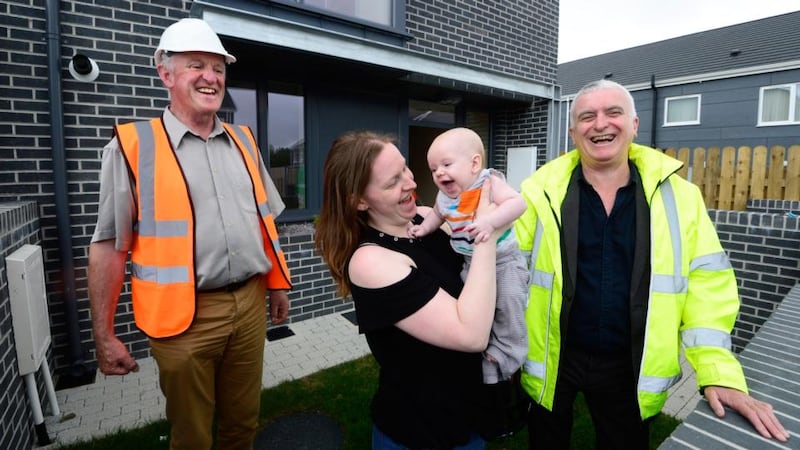Three-bedroom houses costing between €160,000 and €165,000, more than 30 per cent below market value, have been built in Dublin as part of the only affordable housing scheme currently operating in the State.
Ó Cualann Cohousing Alliance, a co-operative housing body, are building an estate of 49 houses in Ballymun, with prices starting from €140,000 for a two-bedroom, €160,000 for a three-bedroom, and €199,000 for a four-bedroom house.
Owners of the first five houses will move into their new homes in the coming days, with the remaining homes, all of which have already been sold, due to be ready on a phased basis over the next 10 months.

The estate has been the only affordable housing scheme open to owner-occupiers since the State programme was discontinued five years ago.
As with the State scheme, the new homeowners had to meet eligibility criteria, and agree to a “clawback clause” before buying the houses.
Single buyers had to have an income lower than €59,000, and couples a combined income less than €79,000. A 10 per cent deposit was required, as well as mortgage approval for the remaining sum.
Clawback fee
Homeowners who sell within 10 years will have to pay a clawback fee to the co-op related to the discount on the purchase price.
A number of factors made the heavily discounted price possible, Ó Cualann chief executive Hugh Brennan explained.
“There are five things that determine the price of houses: the cost of land, development levies, developer’s margins, builder’s costs and labour costs. There’s not much I can do about the last two, but the first three is where a co-operative can really make savings.”
Dublin City Council sold the land to the co-op for €1,000 per house plot. On the open market the same plots would have cost €20,000-€30,000. The council also waived the development levies of €86.40 per square metre, and while the co-op is required by its banks to return some profit, it is not the central motivator, Mr Brennan said.
“We keep that at a 5 per cent developer’s margin, whereas – well who knows what profit private sector developers are making.”
Community benefits
In an area like Ballymun, with high levels of social housing renters, affordable housing also brings benefits to the community.
“There are huge knock-on benefits. These people’s wages will go back into the community through the use of local shops, local childcare. There are 2,000 plots still available in Ballymun, these could generate €10 million for the local economy.”
A new affordable housing scheme was promised nearly two years ago in Budget 2016, but has yet to materialise. Mr Brennan said the co-op model has great potential for both affordable purchasers and renters.
“We firmly believe there is a place for this particular model and that it can be scaled up – I’m going around the country like an evangelist at the moment – but we are in the middle of the worst housing crises. And we need to stop thinking of land in terms of market value and start thinking of its value to society.”













